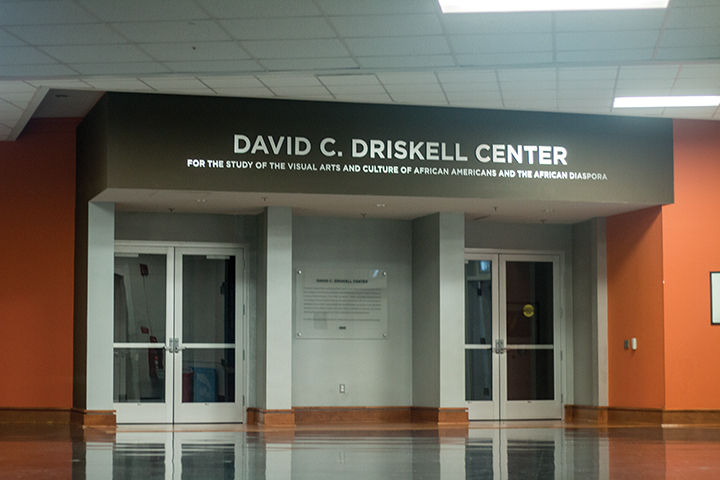Soon after the University System of Maryland Board of Regents approved plans in 2014 to convert Cole Field House into an indoor football practice facility, Dorit Yaron met with university officials to discuss the project.
Yaron, deputy director for the David C. Driskell Center, located in Cole, wanted to know how the renovations would affect the African-American art museum.
“We wanted to alert the university in advance that we had concern for the art collection and then, of course, for the safety of the staff and our visitors,” she said.
In addition to the space used for exhibits, lectures and other events, the center has storage space that contains between 1,500 and 1,600 art objects, she said.
Yaron believed the early construction — when workers broke apart cement and removed stadium seats — could damage the art in storage. Her main concern was the vibrations.
“Vibrations move very easily on cement, through cement, and when art objects and especially paintings are being exposed to vibrations, there is a risk of losing paint, which means permanent damage,” she explained.
Last semester, the university hired museum professionals to assess the situation.
“[The Driskell Center] was a little concerned at the onset,” said Bill Olen, Facilities Management executive director of design and construction. “We wanted to make sure that the project didn’t have any negative impact on the center.”
Since they couldn’t find somewhere on the campus to relocate the Driskell Center permanently, they recommended temporarily moving sensitive pieces of work to a storage space in a separate location.
In December, the center’s staff moved its oldest and most fragile pieces to The Art Gallery located in the Art-Sociology Building and the rest — save for a few unframed prints that were able to stay in sealed drawers — to a museum-standard facility in Landover.
“We work with companies that provide services to museums all over the country,” Yaron said. “It’s humidity-controlled, temperature-controlled and documented.”
In the meantime, the center’s staff continues to host events and lectures.
“We are not shutting down, we’re not closed, but definitely we altered the program,” Yaron said.
While Yaron anticipates bringing the majority of the art back home in June, the center’s fall exhibit will feature installations made from recycled water bottles instead of its usual displays of paintings and sculptures.
“There is less concern that, even with vibration, there will be damage to the installations,” she said.
Though construction will likely continue through 2018, it shouldn’t affect the center’s programming.
“We’ve been coordinating heavily with the Driskell Center, and we continue to coordinate with them,” Olen said. “I have not heard any concerns.”
A wall built around the arena cuts down on the exposure to dust and noise, and most construction is being done in the evenings and accommodating the Driskell Center’s schedule, Yaron said.
“I have to praise the University of Maryland for taking our concerns very seriously and for providing any kind of help that was needed to make it happen,” Yaron said. “All of us here are very thankful to the people we work with.”



